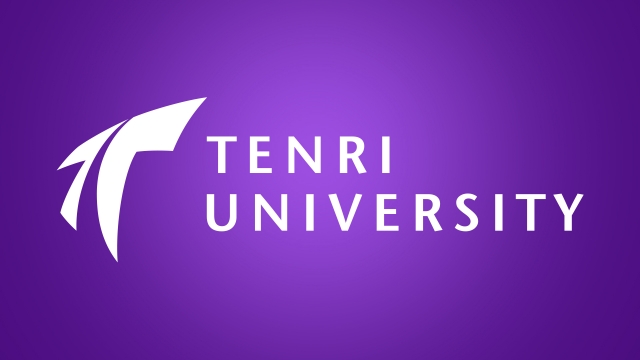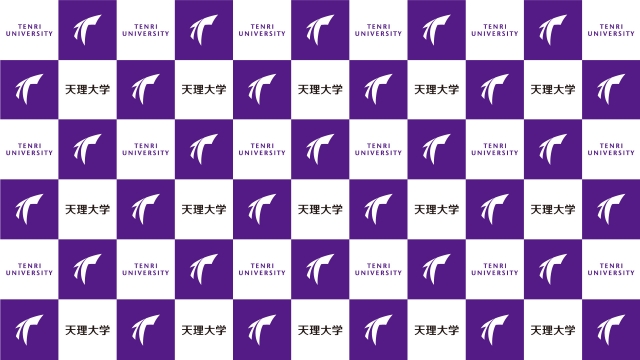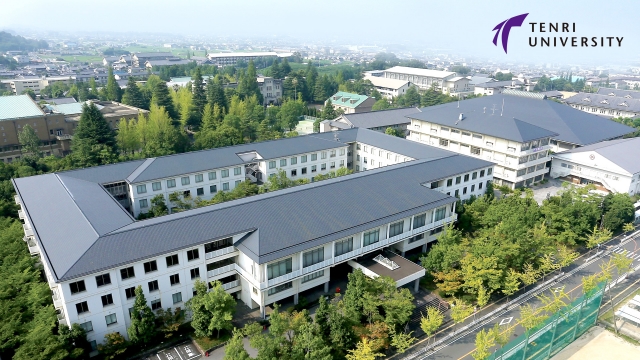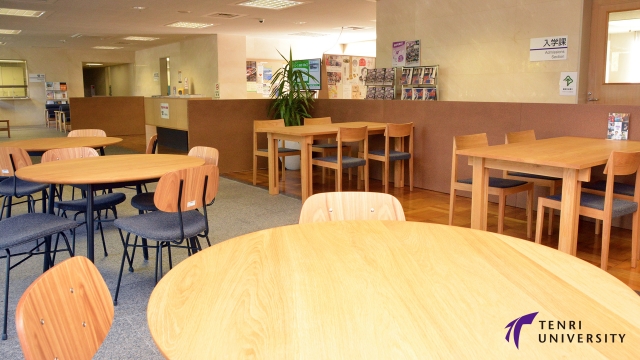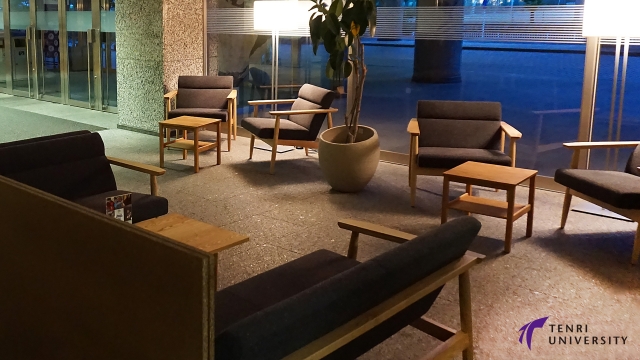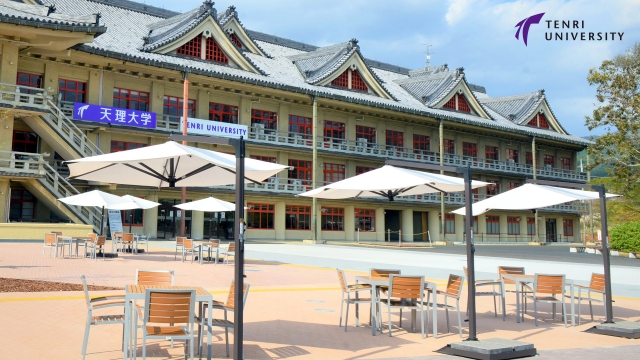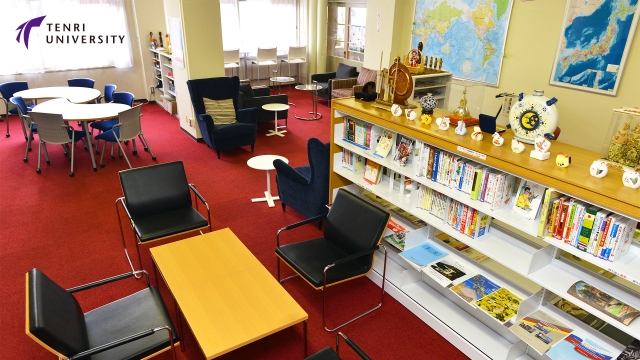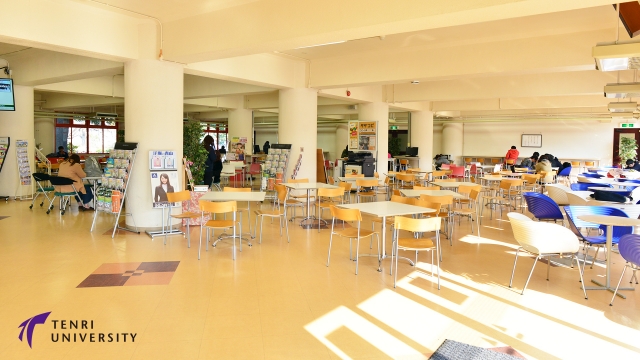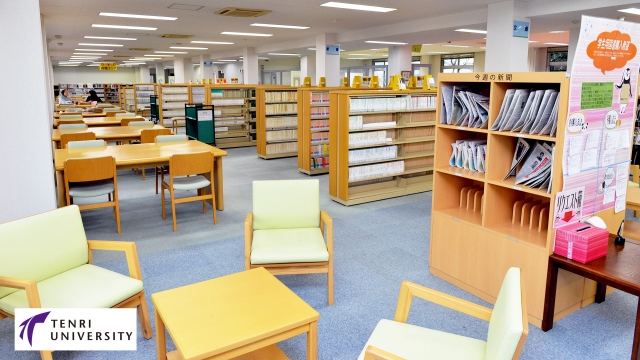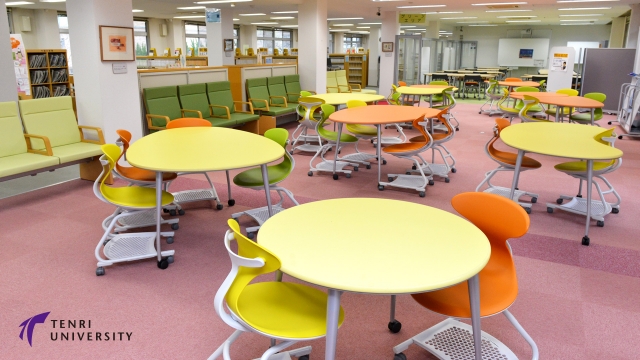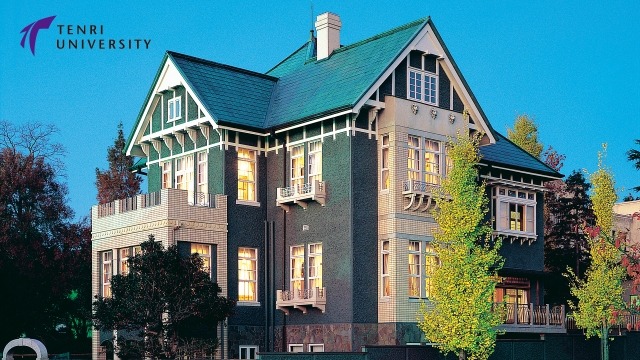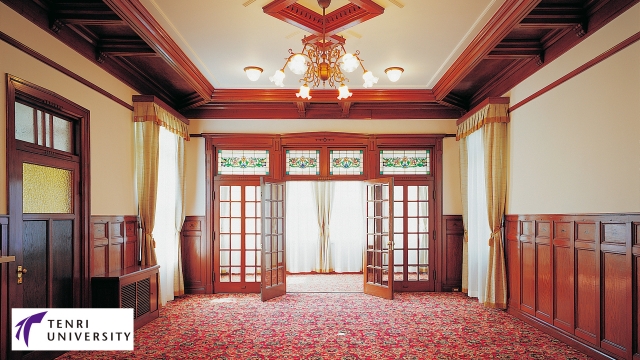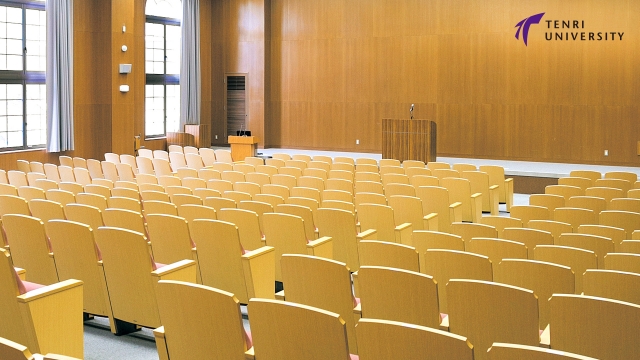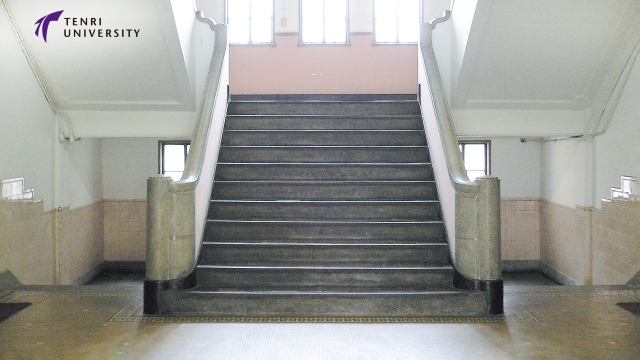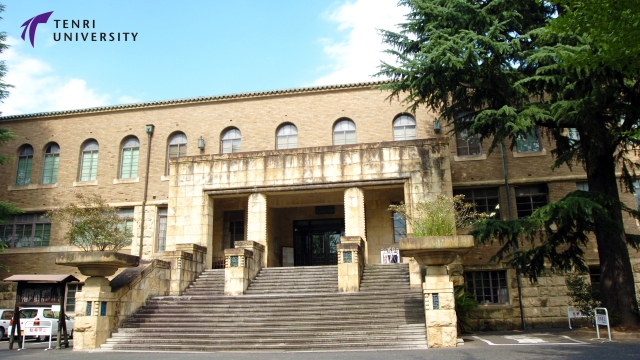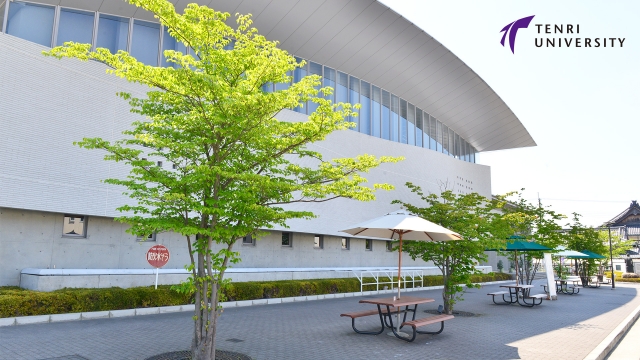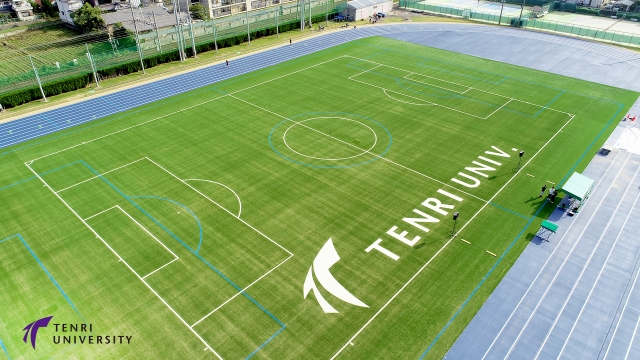About Photo Tour
English translation in progress. Thank you for waiting.
Tenri University has created “Virtual Backgrounds” using images of various Tenri University facilities.
Please use the “Virtual Backgrounds” in various situations such as online classes, meetings, and conferences using zoom, etc.
- After clicking on the image you wish to download and an enlarged image is displayed, save the image by pressing the right mouse button or by other means.
- For more information on setting up “Virtual Backgrounds,” please refer to the help pages of your online meeting service, etc. Some services, such as Google Meet (formerly known as Hangouts Meet), do not offer virtual backgrounds.
There are small classrooms used for seminars and other small-group exercises, as well as offices for each faculty member. In addition, each Department and Major has its own “Joint Research Room.” These are spaces for learning and interaction where faculty members and students can freely come and go as they please. Each library is well stocked with valuable materials. Students can freely use these rooms for self-study, discussions, breaks, etc., and feel free to ask questions and consult with the professors in the rooms.
Hall No. 3, Hall No. 4
Hall No. 3 is equipped with an assembly hall, lecture rooms, and practicum rooms. There is also the “iCAFé” where students—domestic and international—can freely interact with each other as well as with faculty and staff. Hall No. 4 has CALL (Computer Assisted Language Learning) classrooms, audio-visual classrooms, a computer lab, and the Student Hall. A convenient store (Seven-Eleven), and Maruzen Books DEPO are located in front of the entrances to Halls No. 3 and 4.
Hall No. 3 iCAFé
A cross-cultural cafe where Japanese students, international students, faculty and staff can casually enjoy conversation. The space is filled with pop music, a red carpet, sofas, and books and manga from around the world! It is popular as an oasis for a cup of tea or to take a break, or as a space for self-study. Language lessons are also popular among students, taught free of charge by native international students.
Hall No. 4 Student Hall
The bright and spacious Student Hall has a variety of tables and chairs, and is used for various purposes, such as chatting with friends, study sessions, clubs and circles.
Hall No. 8 (Information Library)
The Information Library is used for class preparation and report writing, and includes a DVD viewing area with over 2,000 movies and language study DVDs. The second floor features the U Patio (Active Learning Area), which is equipped with laptops for rent, tablets, projectors and other
equipment. Uniquely shaped tables can be combined in a variety of ways. This facility can be used not only for self-study, but also for preparing group presentations, and can be used in any way. There is an annex of the Information Library on the campus of the Faculty of Physical Education.
Hall No. 8 (Information Library) U Patio
It is a place where international and Japanese students, faculty and students can teach and learn from one another.
Founder’s Hall
The Western-style house, which was built in 1924, is where Shozen Nakayama, the Founder of Tenri University, spent his younger days. It was first located in Wakae Iwata, Osaka, and relocated to the present location. It is said that meetings were held here when Tenri School of Foreign Language, the predecessor of Tenri University, was founded, and various ideas regarding education and ideals were discussed. The building is still open to the public, and anyone can tour the building. It is a building of great value both as a modern Japanese architecture and as a memorial to the history of the University.
Hall No. 9 (Furusato Kaikan Alumni House Main Hall)
Built with donations from alumni, the building houses the office of the Furusatokai Alumni Association on the first floor. The building is used as a base for alumni exchanges, such as “Homecoming Day.”
The Main Hall on the second floor is a theater with simultaneous interpretation facilities, and is used for classes and academic conferences with invited lecturers.
Hall No. 1
Completed in 1925, Hall No. 1 has continued to watch over the history of Tenri University. The
three-story reinforced concrete school building is said to have been a spectacular sight in Tenri, which at the time was still a field as far as the eye could see. The window frames and glass are finely decorated, and the staircase railings are finely sculpted. Designed as a foreign language school, it was a rare Western-style building at the time, and was the first reinforced concrete structure in Nara Prefecture. The majority of the building is still intact as it was when it was built. The building still has a solemn and academic atmosphere.
The affiliated Tenri City Library
The library has approximately 1.5 million volumes and holds many valuable documents in the fields of religious studies, oriental studies, archaeology, folklore, geography, linguistics, and Japanese literature. Among them are 6 national treasures, 87 important cultural properties, and 66 important art objects. Researchers from all over the world visit the library to browse its extensive collection. The building, built in the early Showa period, exudes a calm and dignified atmosphere, providing a space that deepens the intellectual activities of students, graduate students, and faculty members.
Sports Center
Students are able to use the full-scale training area to suit their needs. On the second floor of the vast main arena, which can accommodate two basketball courts, there is a running pathway that can also be used as bleachers. Other facilities include a sub-arena, a gymnasium, and a heated swimming pool for year-round practice.
Field with 400 meter track
All types of track and field events can be practiced, and inside there is a field for soccer as well. The blue track is made of polyurethane material for the safety of the competitors, and it also prevents heat stroke. The field is covered with artificial turf for durability and safety. Renovated in 2018, the stadium has been transformed into a more beautiful and functional arena.


